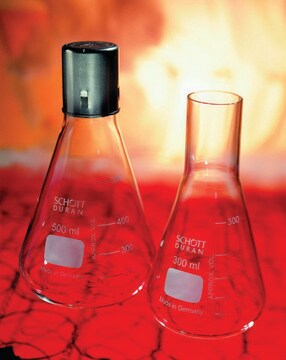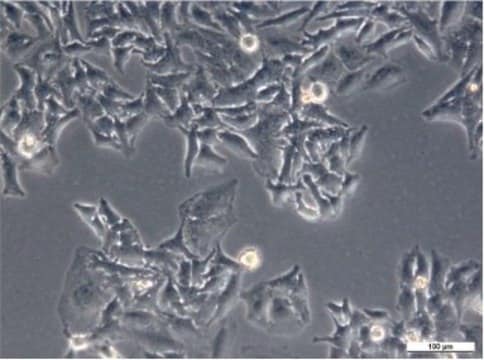HeLa-Mitotrap
15042201, human cervix, Epithelial, polygonal
About This Item
Empfohlene Produkte
Produktbezeichnung
HeLa-Mitotrap, 15042201
Biologische Quelle
human cervix
Beschreibung
Human cervix carcinoma, knocksideways, rapid protein inactivation by rerouting to mitochondria for functional studies, genetically modified
Wachstumsmodus
Adherent
Morphologie
Epithelial, polygonal
Methode(n)
cell culture | mammalian: suitable
Versandbedingung
dry ice
Lagertemp.
−196°C
Beschreibung der Zelllinie
The HeLa-Mitotrap cell line is a stably transfected HeLa cell line expressing a mitochondrial trapping protein containing an FRB domain. The term FRB refers to a protein containing FKBP12 and Rapamycin Binding (FRB) domains within the mTOR (mammalian Target of Rapamycin) protein. The Hela-Mitotrap cell line can be transfected to express the target protein of interest genetically modified to have an FKBP domain. Upon treatment of the cells with rapamycin target proteins containing an FKBP domain will dimerize with FRB domains. The resulting protein complexes are sequestered to the mitochondria.
Treatment of cell lines containing both FRB and FKBP rapamycin binding proteins can sequester target proteins to the mitochondria within minutes of treatment rendering the cells ready for immediate assay. This type of approach, referred to as ‘‘knocksideways,′′ should be widely applicable as a means of inactivating proteins within a timescale of seconds or minutes rather than days.
The derivation of the expression construct for the generation of the FRB expressing HeLa cell line is described in Motley et.al (2006, PMID: 17035630)The Mito-YFP-FRB construct was based on a pEYFP-FRB plasmid (O. Glebov, MRC Laboratory of Molecular Biology, Cambridge, UK). The N-terminal sorting signal of Tom70p was amplified by PCR from yeast genomic DNA and cloned into the plasmid, then the Mito-YFP-FRB coding sequence was moved into the retroviral vector pQCXIH (Clontech), which carries a hygromycin resistance gene. Stable cell lines were selected using hygromyin selection.
Nährmedium
Subkultur-Routine
Sonstige Hinweise
Haftungsausschluss
Hier finden Sie alle aktuellen Versionen:
Analysenzertifikate (COA)
It looks like we've run into a problem, but you can still download Certificates of Analysis from our Dokumente section.
Wenn Sie Hilfe benötigen, wenden Sie sich bitte an Kundensupport
Besitzen Sie dieses Produkt bereits?
In der Dokumentenbibliothek finden Sie die Dokumentation zu den Produkten, die Sie kürzlich erworben haben.
Unser Team von Wissenschaftlern verfügt über Erfahrung in allen Forschungsbereichen einschließlich Life Science, Materialwissenschaften, chemischer Synthese, Chromatographie, Analytik und vielen mehr..
Setzen Sie sich mit dem technischen Dienst in Verbindung.






